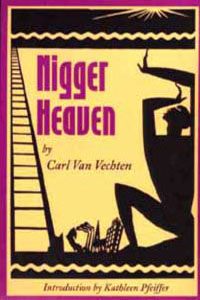Living Portraits: Carl Van Vechten’s Color Photographs of African Americans, 1939-1964
Beinecke Rare Book & Manuscript Library
Yale University, New Haven, Connecticut
Carl Van Vechten (1880-1964), photographer, promotor of literary talent, and critic of dance, theater, and opera, had an artistic vision rooted in the centrality of the talented person. He cherished accomplishment, whether in music, dance, theater, fine art, literature, sport, or advocacy. He began to make photographic portraits in 1932; in 1939 he discovered newly available color film. For a quarter century, he invited friends and acquaintances, well-known artists, fledgling entertainers, and public intellectuals to sit for him, often against backdrops reminiscent of the vivid colors and patterns of a Matisse painting. Among his subjects are a very young Diahann Carroll, Billie Holiday in tears, Paul Robeson as Othello, Althea Gibson swinging a tennis racquet, and a procession of opera stars, composers, authors, musicians, activists, educators, and journalists who made notable contributions to the cultural and intellectual life of the country. Also included are brilliant color images of notable and everyday places: Fisk University in Nashville, Tennessee; the wedding of friends; pushcarts and street scenes of Harlem; children at play in a housing project’s yard.
The Collection
Color slides of Blacks.
1,884 color Kodachrome slides, 2 x 2 inches each
[Note from Steven F. Riley] Also includes photographs of: Peter Abrahams, Prince Etuka Okala Abutu, Armenta Adams, Adele Addison, Alvin Ailey, Betty Allen, Sanford Allen, Martina Arroyo, William Attaway, Ethel Ayler, Pearl Bailey, James Baldwin, Harry Belafonte, Roy Thompson Beresford, Mary McLeod Bethune, Charles Blackwell, McHenry Boatwright, Margaret Allison Bonds, Paul Bontemps, William Stanley Braithwaite, Carol Brice, Jonathan Brice, Maurice Brooks, Anne Wiggins Brown, Debria Brown, Roscoe Lee Browne, Joyce Bryant, Ralph J. Bunche, Dan Burley, Miriam Burton, John Carlis, Thelma Carpenter, Diahann Carroll, John Carter, Shirley Verrett Carter, Horace Cayton, Omar Clay, Ladybird Cleveland, Leo Coleman, Durward B. Collins, Janet Collins, Zebedee Collins, Clayton Corbin, Edna Cordoza, Eldzier Corter, Robert Curtis, Jimmy Daniels, Ossie Davis, Gloria Davy, Ruby Dee, William Demby, Beauford Delaney, Inez Dickerson, Hugh Dilworth, Mattiwilda Dobbs, Owen Dodson, W. E. B. DuBois, Todd Duncan, Roy Eaton, Bobby Evans, Martha Flowers, Benny Garland, Althea Gibson, Richard Gibson, John Birks “Dizzie” Gillespie, Shirley Graham, Reri Grist, Nicolas Guillen, Juanita Hall, Bertha “Chippie” Hill, Ramon Blancos Habana, Frank Harriott, Afrika Hayes, Marion Hayes, Roland Hayes, Chester Eugene Haynes, Godfrey Headley, Bomar Himes, Geoffrey Holder, Leo Holder, Charlotte Holloman, Nora Holt, Marilyn Horne, Langston Hughes, Phillipa Husley, Earle Hyman, Ivie Jackman, Annette Jackson, Mahalia Jackson, Raymond Jackson, Louise E. Jefferson, Charles Johnson, Hal Johnson, Hylan “Dots” Johnson, Marie Johnson, (Everett) LeRoi Jones , James Earl Jones, Laurence Clifton Jones, Ulysses Kay, William Melvin Kelly, Eartha (Mae) Kitt, George Lamming, Carmen De Lavallade, Everett Lee, Henry Lewis, Powell Lindsay, James Lowe, Robert Keith McFerrin, Claudia McNeil, Geraldyn (Gerri) Hodges Major, Claude Marchant, William Marshall, Mabel Mercer, Lizzie Miles, Arthur Mitchell, Edgar Mittelholzer, Mollie Moon, Linwood Morris, Willard Motley, Lorenzo Newby, Maidie Norman, Godfrey Nurse, Frederick O’Neal, Leonard de Paur, Louise Parker, Louis Peterson, Julius Perkins Jr., Mildred Perkins, Charles Perry, Ann Petry, Evelyn La Rue Pittman, Leontyne Price, Bertice Reading, Guy Rodgers, Percy Rodriguez, Pearl Showers, Edith Spurlock Sampson, Diana Sands, Harold Scott, George Shirley, Bobby (Robert Waltrip) Short, Merton Simpson, Noble Sissle, Clarence Smith Jr., William Gardner Smith, Rawn Spearman, Melvin Stewart, William Grant Still, Billy Strayhorn, Howard Swanson, Archie Savage, Wesley Tann, Ellen Tarry, Dorothy Taylor, Claude Thompson, Veronica Tyler, Margaret Tynes, Henry Van Dyke, Elaine Vance, William Warfield, Dorothy West, Moran Weston, Clarence Cameron White, Josh White, Lindsay H. White, Roy Wilkins, Billy Dee Williams, Camilla Williams, John Alfred Williams, Maurice Williford, Ellis Wilson, John W. Work, and Dale Wright.
To view the collection, click here.
